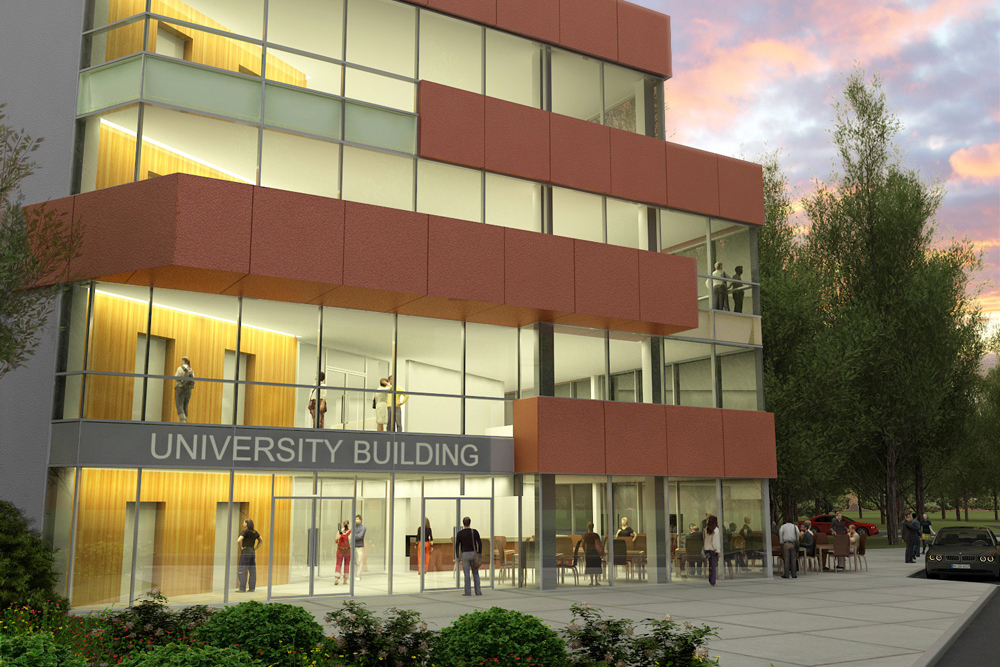
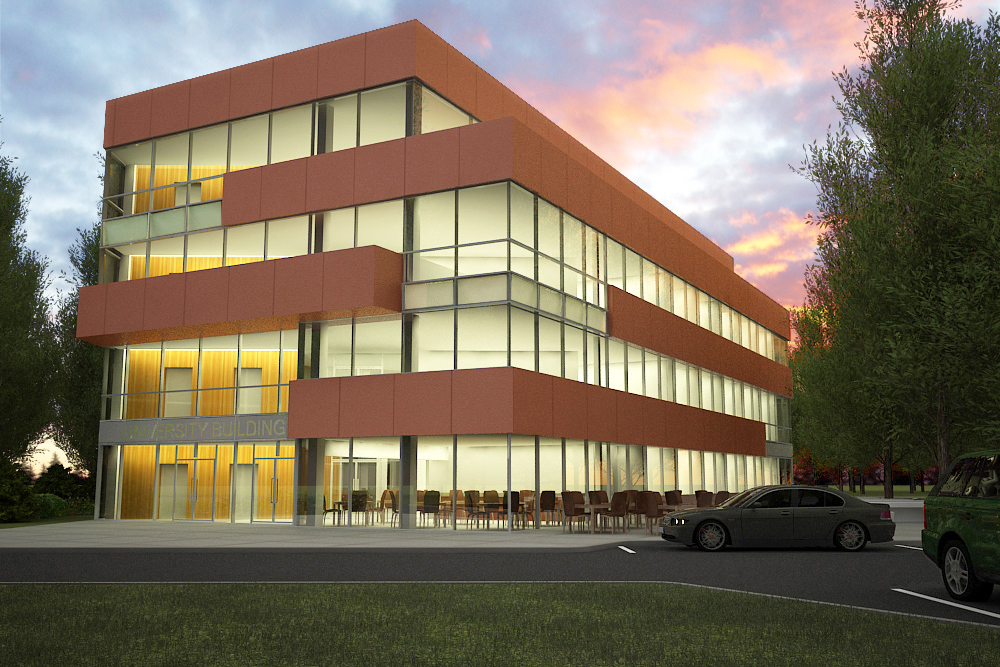

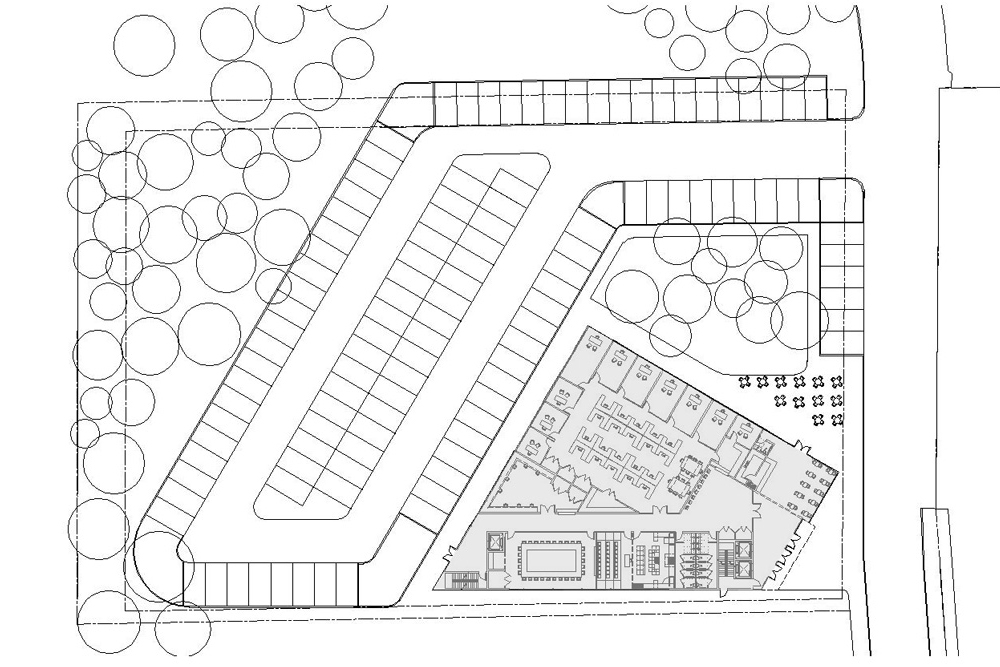
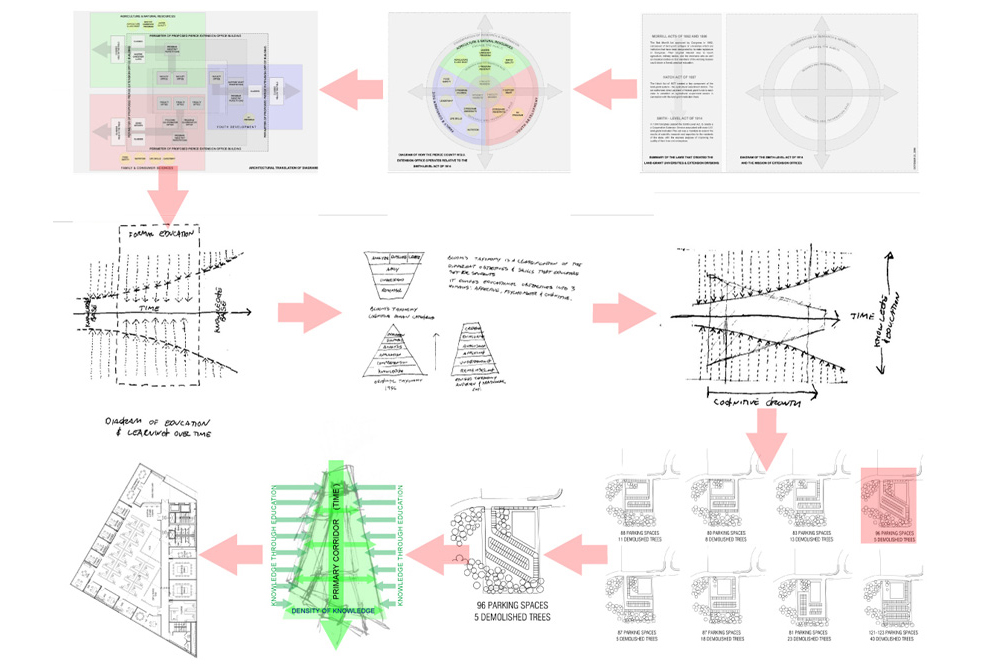
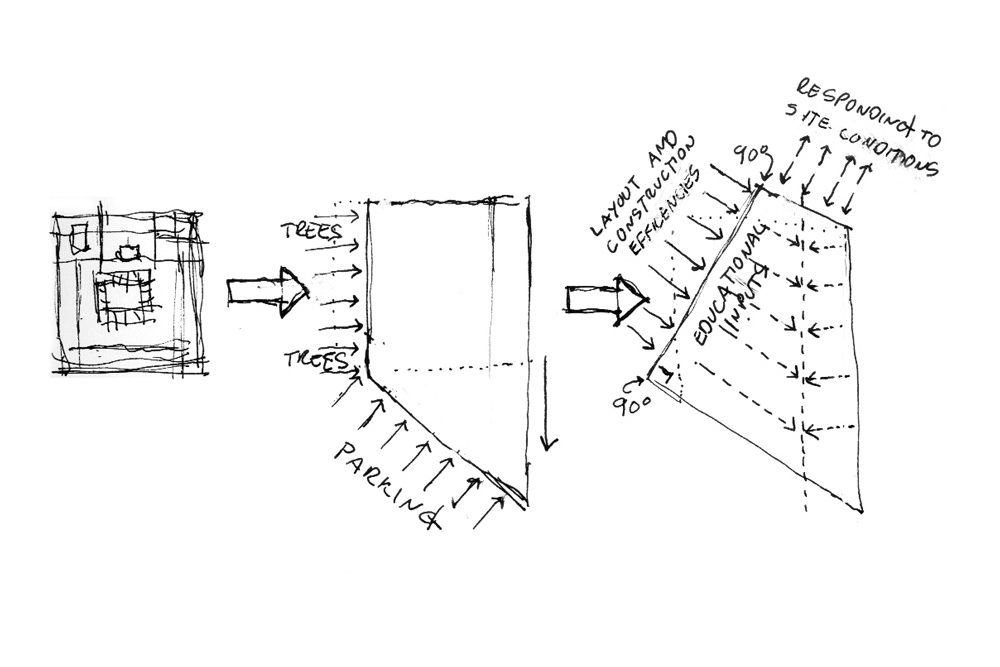


Since 2006, Soluri Architecture (SA) has been working as a consultant for the City of University Place, WA and various private developers on the $250 million redevelopment of their Town Center. During this time period, SA was part of the consulting team that designed UP’s master plan, and in 2007, SA won the city’s design competition to be the architect for its 62,000 sq. ft. Civic Building. The City of UP is best known as the home of the Chambers Bay Golf Course, which hosted the 2015 US Open.
This university office building was the first Town Center project that SA became involved with, having received the commission from a private developer who was looking to construct the first of several buildings outlined within the evolving master plan.
The private developer was looking to quickly design and construct this 43,000 sq. ft. office building. They wanted the building to specifically accommodate an extension for Washington State University (WSU), which offers continuing education classes to students throughout the state. This WSU Extension needed to include an educational facility with classrooms, lecture rooms, teaching labs, conference rooms, and offices for the staff.
Our design process began with an analysis of the WSU Extension program, then branched off to to analyze the education process itself. We learned that while education involves many techniques and approaches, it is essentially a continuously-evolving and dynamic process that is cumulative in nature. During this analysis phase, we diagrammed each of these concepts to better understand how they work.
At the same time, we also studied the site to determine the best position and shape for the building. The site contained dozens of large fir trees and a large clearing, however we wanted to keep as many of these trees as possible, while also maximizing parking spots. We soon realized that a rectangular footprint could not meet the parking requirements without cutting down most of the trees. These conflicting goals were resolved by developing a series of 8 schemes, aiming to maximize both the number of parking spaces and the number of trees. We found that that the most effective scheme involved an irregular, trapezoidal building. We soon realized that this trapezoidal shape evoked a profile similar to the diagrams that we were producing in our analysis of education, and were able to merge these ideas together into a uniform scheme that addressed all these issues.
The building was designed, drawn up, approved by the City, and issued for bidding within 8 months. Soluri Architecture’s unique performative design methodology was critical to achieving the speed and responsiveness necessary to meet the client’s needs while meeting the schedule, budget, code requirements. Initially skeptical of the building’s irregular shape, the developer quickly realized it was an efficient solution because it provided usable space where it was most needed at the rear, and less space at the elevators and lobbies at the front which required less space. The developer agreed to move forward with construction, but unfortunately, before ground could be broken, the Great Recession hit and the project was never built.